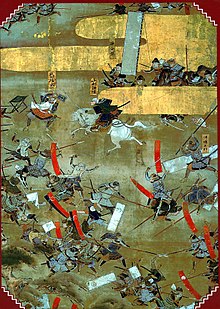
1626 (MDCXXVI) was a common year starting on Thursday of the Gregorian calendar and a common year starting on Sunday of the Julian calendar, the 1626th year of the Common Era (CE) and Anno Domini (AD) designations, the 626th year of the 2nd millennium, the 26th year of the 17th century, and the 7th year of the 1620s decade. As of the start of 1626, the Gregorian calendar was 10 days ahead of the Julian calendar, which remained in localized use until 1923.

1608 (MDCVIII) was a leap year starting on Tuesday of the Gregorian calendar and a leap year starting on Friday of the Julian calendar, the 1608th year of the Common Era (CE) and Anno Domini (AD) designations, the 608th year of the 2nd millennium, the 8th year of the 17th century, and the 9th year of the 1600s decade. As of the start of 1608, the Gregorian calendar was 10 days ahead of the Julian calendar, which remained in localized use until 1923.

The 1490s decade ran from January 1, 1490, to December 31, 1499.

1707 (MDCCVII) was a common year starting on Saturday of the Gregorian calendar and a common year starting on Wednesday of the Julian calendar, the 1707th year of the Common Era (CE) and Anno Domini (AD) designations, the 707th year of the 2nd millennium, the 7th year of the 18th century, and the 8th year of the 1700s decade. As of the start of 1707, the Gregorian calendar was 11 days ahead of the Julian calendar, which remained in localized use until 1923.
The 1700s decade ran from January 1, 1700, to December 31, 1709.

The 1620s decade ran from January 1, 1620, to December 31, 1629.
The 1600s was a decade of the Gregorian calendar that began on 1 January 1600, and ended on 31 December 1609.
The 1710s decade ran from January 1, 1710, to December 31, 1719.

1630 (MDCXXX) was a common year starting on Tuesday of the Gregorian calendar and a common year starting on Friday of the Julian calendar, the 1630th year of the Common Era (CE) and Anno Domini (AD) designations, the 630th year of the 2nd millennium, the 30th year of the 17th century, and the 1st year of the 1630s decade. As of the start of 1630, the Gregorian calendar was 10 days ahead of the Julian calendar, which remained in localized use until 1923.

1607 (MDCVII) was a common year starting on Monday of the Gregorian calendar and a common year starting on Thursday of the Julian calendar, the 1607th year of the Common Era (CE) and Anno Domini (AD) designations, the 607th year of the 2nd millennium, the 7th year of the 17th century, and the 8th year of the 1600s decade. As of the start of 1607, the Gregorian calendar was 10 days ahead of the Julian calendar, which remained in localized use until 1923.
The 1560s decade ran from January 1, 1560, to December 31, 1569.

The 1580s decade ran from January 1, 1580, to December 31, 1589.

1586 (MDLXXXVI) was a common year starting on Wednesday of the Gregorian calendar and a common year starting on Saturday of the Julian calendar, the 1586th year of the Common Era (CE) and Anno Domini (AD) designations, the 586th year of the 2nd millennium, the 86th year of the 16th century, and the 7th year of the 1580s decade. As of the start of 1586, the Gregorian calendar was 10 days ahead of the Julian calendar, which remained in localized use until 1923.

1581 (MDLXXXI) was a common year starting on Sunday in the Julian calendar, and a common year starting on Thursday in the Proleptic Gregorian calendar.

Year 1567 (MDLXVII) was a common year starting on Wednesday of the Julian calendar.

1715 (MDCCXV) was a common year starting on Tuesday of the Gregorian calendar and a common year starting on Saturday of the Julian calendar, the 1715th year of the Common Era (CE) and Anno Domini (AD) designations, the 715th year of the 2nd millennium, the 15th year of the 18th century, and the 6th year of the 1710s decade. As of the start of 1715, the Gregorian calendar was 11 days ahead of the Julian calendar, which remained in localized use until 1923.

1693 (MDCXCIII) was a common year starting on Thursday of the Gregorian calendar and a common year starting on Sunday of the Julian calendar, the 1693rd year of the Common Era (CE) and Anno Domini (AD) designations, the 693rd year of the 2nd millennium, the 93rd year of the 17th century, and the 4th year of the 1690s decade. As of the start of 1693, the Gregorian calendar was 10 days ahead of the Julian calendar, which remained in localized use until 1923.

1692 (MDCXCII) was a leap year starting on Tuesday of the Gregorian calendar and a leap year starting on Friday of the Julian calendar, the 1692nd year of the Common Era (CE) and Anno Domini (AD) designations, the 692nd year of the 2nd millennium, the 92nd year of the 17th century, and the 3rd year of the 1690s decade. As of the start of 1692, the Gregorian calendar was 10 days ahead of the Julian calendar, which remained in localized use until 1923.

Year 1545 (MDXLV) was a common year starting on Thursday of the Julian calendar.

Year 1515 (MDXV) was a common year starting on Monday of the Julian calendar.





















